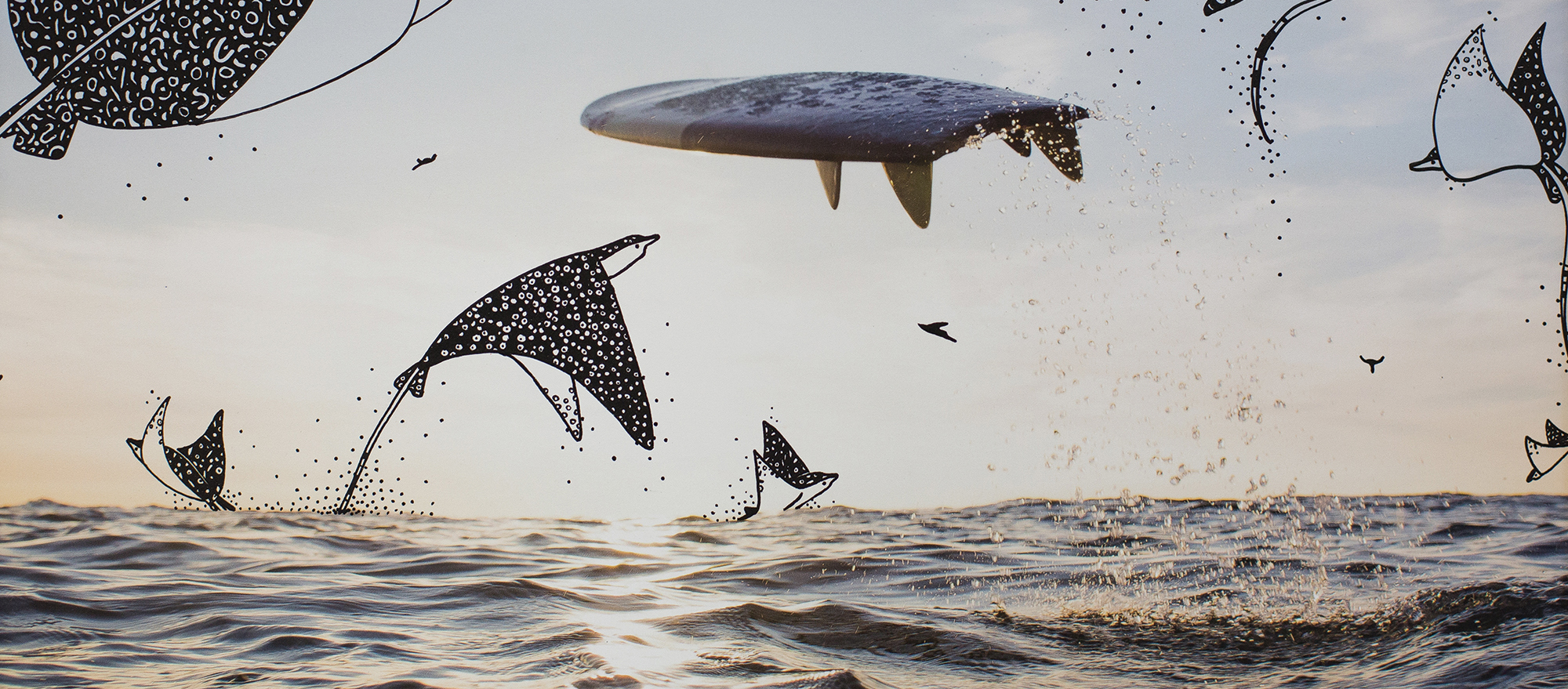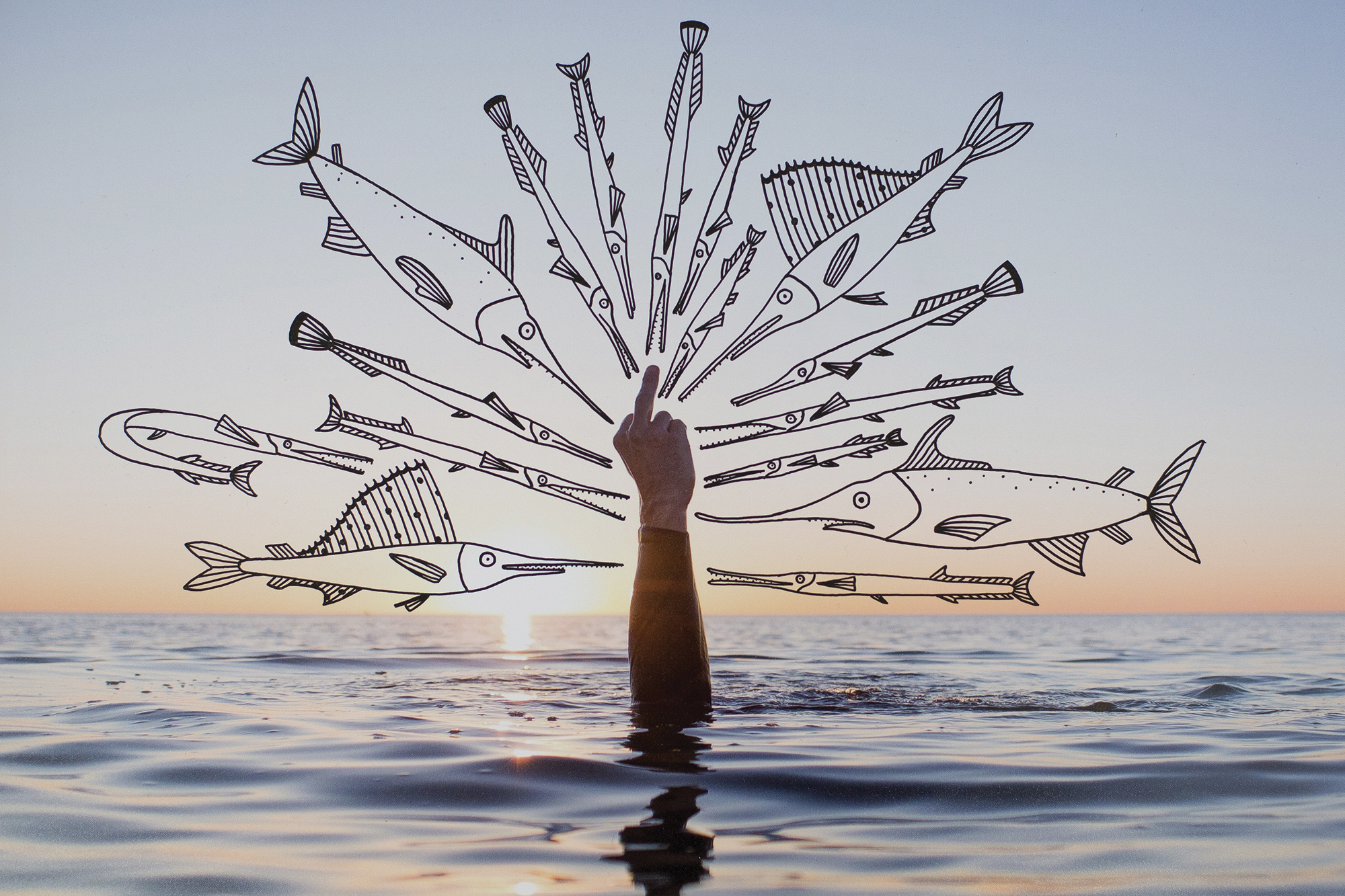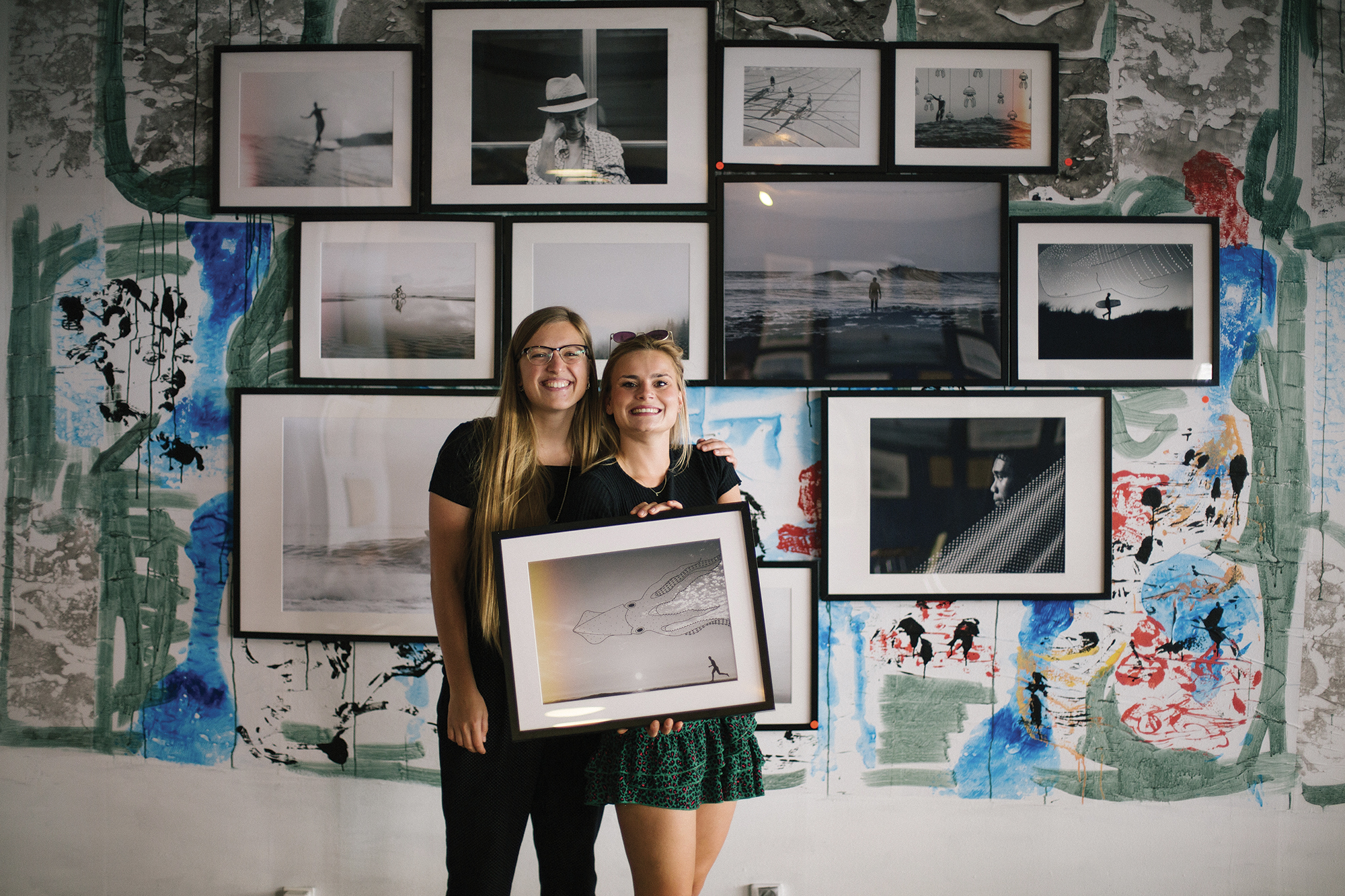Photos Jelle Mul

Nataša Lops. Over the creativity.

Hi Nataša, tell me something about yourself. About your childhood, what you do now, where you live, who you are, a little bit of everything.
My name is Nataša, I’m half Bosnian, half Dutch. I grew up in Holland near a big city called Rotterdam. Throughout my whole youth I was a real city rat, as my boyfriend jokingly called me. Strolling the city in search of street art, flyers and magazines, spending hours in record shops with my dad. I loved music and drawings. On Sundays we would go to the beach in The Hague and I would see surfers in the water, that was a striking sight and I started dreaming about that maybe I could try it one day too. In art school I finally started surfing, hiking, travelling and that eventually changed everything. I became fascinated by board sports, the oceans, mountains, everything that is outdoor.
Tell me something about your career as an artist.
I studied graphic design at the Willem de Kooning in Rotterdam. At art school I experimented a lot, I did not have a real defined style back then, but at least it was always handmade. I didn’t really like technology taking over too much. I got heavily inspired by a lot of artist with roots in skateboarding, surf, punk, hip-hop and graffiti. My first job after art school was to redesign all the communication of a family owned business. That was a big and long job and during that time I started shaping my illustration style and making a lot of personal work. After 2 years at the family business, I quit and moved to Australia for a bit, where I even got more influenced by surf culture. When I came back, I got a job as graphic designer at O’Neill, that was really a dream coming true, best of both worlds, surf and design. I met a lot of wonderful people there, like Jelle, who supported my art. And in the last 2 years I worked as a designer for a small advertising agency in Amsterdam, where I’m learning prop making and animation.
Where do you get your inspiration from?
From outdoor and creative friends around me. Instagram is also wonderful to find inspiring athletes, videographers and artists within skate and surf culture, I can also spend hours looking at magazines in bookstores. Jelle is great input as well for documentaries and photographers and he has a wonderful magazines collection, he could open his own store.
You’ve got a well defined style, how did you achieved it?
I think it’s because of my background in graphic design. We learned to communicate the essence, in a simple and powerful way, that’s why most of my woks are just black and white line drawings. And then it depends on my mood whether I decide to realize things more complicated filling them up with patterns, dots, colours.
In a purely digital world, how much is it important to stand out with handmade graphics?
A lot of people say I’m insane for still drawing analogue, using an iPad or a computer it’s a lot faster, they say… But I don’t care, I love the analogue process, I love the smell of fresh paper and my poska pens fumbling up drawings across the room. Why recreate an analogue feel in the computer, if you can actually make the real deal, get your hand dirty? I also like to take my time and take it very slow, I don’t want to be in a hurry with my personal work, I just want to enjoy it and relax.
In one of your last work you drew on photographs. When and how was this idea born?
Back at O’Neill when Jelle and I were colleagues, he always told me that one day we would had an exhibition together. Jelle was always taking pictures and I was always drawing, 1+1=2.
Artists usually work alone. But in your works with Jelle Mul you had to collaborate with another artist. Was that something that held you back and a source of inspiration?
It has been super fun to work with Jelle, because we have the same style and same sense of humour. We had one exhibition a year in the last two years. Jelle gives me a batch of his printed work and I can draw whatever I want directly onto the photos. So there is just one original piece that people can buy and 100% of the money goes to an organization they choose related to support outdoor and nature.

How important is it to express yourself through your creativity?
I can be quite shy and not a super talkative person, but with imagery making I can express myself very well and strongly. A few years ago, my dad got very ill and he died in the end. Drawing really helped me through those difficult times, it was almost like meditation. That’s why my style got more detailed the last years and has some kind of pattern in it, big or small.
Lots of your works are clearly connected to the outdoor world, why?
After art school I had the chance to travel a lot to discover new countries and developed a big fascination for wild places, especially the ocean. So I guess that has been reflected into my artworks.
What does the word outdoor mean to you?
I associate outdoor with wilderness or wild. I think the word ‘wild’ best captures the feelings and images I get in my head.
Is nature so far away from art?
Nature is art to me. All the incredible patterns, colours, structures, shapes of its creatures, vegetation and landscapes. It has been master in crafting beautiful things for millions of years and I use it as my source of inspiration.
What will Natasa do in the near future?
I have an ever growing list of personal projects I want to accomplish and new techniques I want to try. Whenever I tick one project off, I have added 10 new ones in the meantime. Hopefully this year I would find more time to pursue some of these projects, like realizing a photo book with Jelle, creating life-sized drawings, clothing patterns, stationary, creating animations for movies etc.
Nature is art to me. All the incredible patterns, colours, structures, shapes of its creatures, vegetation and landscapes. It has been master in crafting beautiful things for millions of years and I use it as my source of inspiration.
Share this Feature